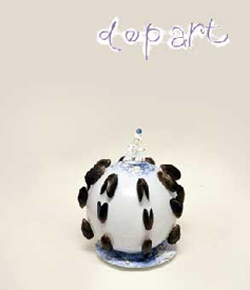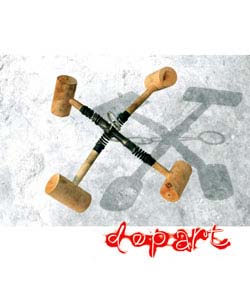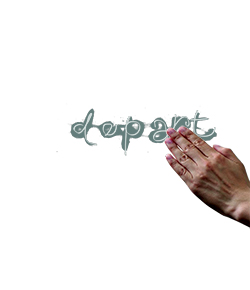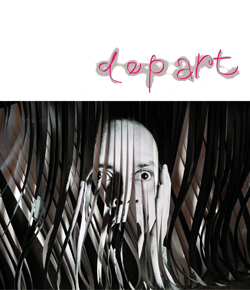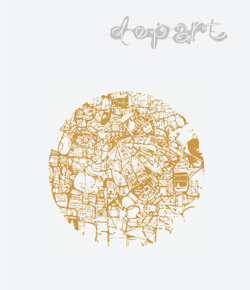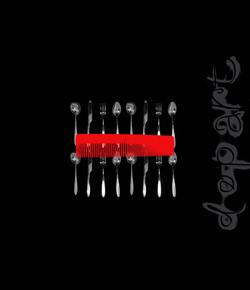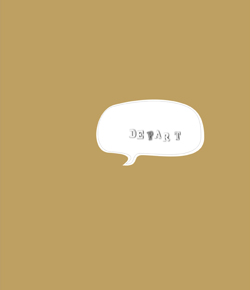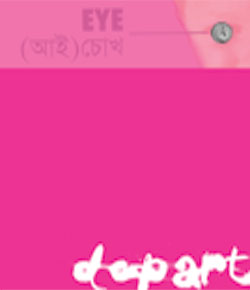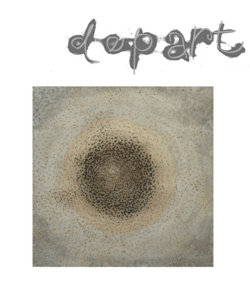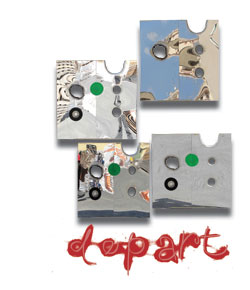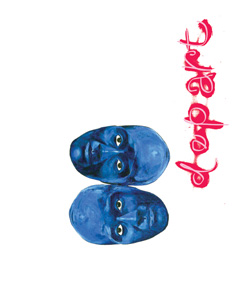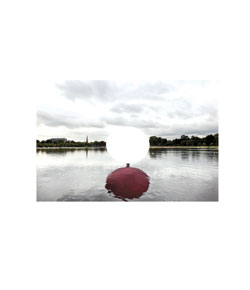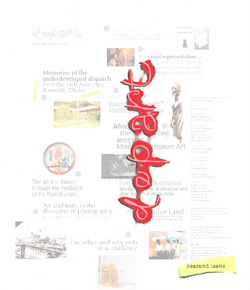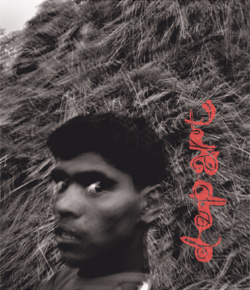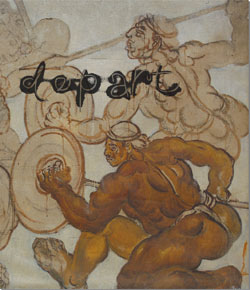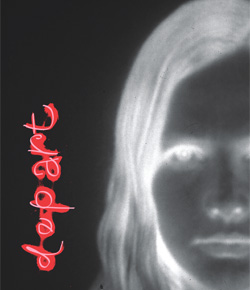encounter
Documents, images, and memory
An encounter with Naeem Mohaiemen
Critic/curator RENUKA SAWHNEY and artist NAEEM MOHAIEMEN have been speaking to each other for some time now. In the following extract, the role of memory as part of a critical approach and form of work(ing) with(in) contested political spaces is unpacked through its manifestation in various locations. This was originally published in The Johannesburg Workshop in Theory and Criticism, Volume 7.


Renuka: Jalal Toufic writes in, The Withdrawal of a Tradition Past a Surpassing Disaster1, 'If the atomic bombings of Hiroshima and Nagasaki on August 6 and 9, 1945, respectively, are a surpassing disaster then beyond not only the immediate death toll and the manifest destruction of buildings, including museums, libraries and temples, and of various other sorts of physical records, there would be an additional immaterial withdrawal of literary, philosophical and thoughtful texts as well as of certain films, videos, and musical works, notwithstanding that copies of these continue to be physically available; of paintings and buildings that were not physically destroyed; of spiritual guides; and of the holiness/specialness of certain spaces.'
Much of your work uses documents, images, and memory to examine left histories, with particular emphasis on Bangladesh. How much of 'the long term material and immaterial effects' of the 1971 war of independence and its aftermath are actually available to you for frame, use, or structuring of an examination?
Naeem: You referred mainly to 1971, but there are at least two historical conjunctures that loom large in the subcontinent's 'national' imaginary (even accounting for fragmented, contradictory forms of remembering within each of these nation states). For India and Pakistan, 1947 is the larger rupture, while for Bangladesh it is 1971. The 1971 war should theoretically also be a second rupture for Pakistan, but a process of languid amnesia has been the main response of the Pakistani state, popular culture, and the academy. There are notable exceptions, such as Saadia Toor's excellent book, State of Islam2, but the dissident numbers are small.
In Bangladesh, the 1971 war and associated trauma (as well as guilt, suspicion, accusation, and purging), plays out continuously within cultural work (unfortunately, the patronage of the state has made much of this rote and safe). There is an abundance of 'material' related to the 1971 war, and also a deadening effect that pushes against memory, and toward stale memorials instead. This leaves little space for thinking through 1947 and its aftermath for East Bengal.


In 1993, I was working on a research project on the war and went to Rajshahi to interview survivors. Rajshahi had absorbed a significant number of Murshidabad and Malda residents who crossed over from India during 1947. Encountering older people whose memories of the 1947 violence was sharp, and at odds with the stories of 1971 that were more widely circulated. I met a wonderful old man – a retired civil servant who liked to talk all day (only breaking for lunch). He used to insist, quite stridently, that, 'We also suffered in crossing during Partition, but no one remembers this. It is as if East Bengal has only been through one moment in 1971, but in fact there were many.'
He may have also been hinting at various small communal riots that played out in the 1950s and 1960s, but are not memorialized because they don't fit the smooth narrative of an always already present state of conflict with the Pakistani state. One such micro-conflict forms a pivot point in Amitav Ghosh's Shadowlines3 - oscillating from 'I can't find Dhaka' to a communal attack played out in slow motion, in the twinkling of the memory eye.
So, to come back to your question, what is 'available' is highly codified. It appears that there is a great deal of material for researchers, but the volume masks things that are fapa (hollow inside) and has many blind spots.
Renuka: In Resnais' Hiroshima, Mon Amour4, the act of forgetting is also the act of memory. In Toufic's Surpassing Disaster, the work of artists is to resurrect access, through both forgetting and remembering. Unreliable memory is inherent to your process, and suggests a refusal to monumentalize or institutionalize forms such as images, documents, and archives.
Naeem: Not only are we working with unstable memories, but also with an active process of erasure of physical objects that record even those unreliable memories. In talking about the pressure to create what I (sarcastically) call shothik itihash (correct history), I remembered this anecdote: '[D]uring a research session combing through photocopies of documents, I asked the custodian where the originals were. The documents he had shown me were pristine yet distant, copies of copies. The originals are long gone, he explained. Every time there is a change in government, an official inevitably comes down to the storeroom and asks to see what is inside. With a tradition of abrupt and forced pala bodol (change of stage), every state functionary assumes that nothing that came before his time will help his cause.
Therefore, the safest path is to destroy all documents, which the official does with mechanical and unemotional efficiency.’5
The Young Man Was, a fragmentary take on the 1970s ultra-left, is built up from the spine of many sets of memories. Afsan Chowdhury's diary, written in cloaked form (he uses the third person, and only in conversation revealed that the mistaken-identity interrogation victim was himself), was published as an essay in Himal magazine in Nepal. A G Mahmood's negotiation dialogue was preserved on C-30 cassette tapes from 1977, later digitized by an NHK (Japan) documentary team, and finally arrived back in Dhaka in CD form (the original tapes have disappeared in Japan, it seems). Abdullah Motaleb's story of leaving the country on August 14th (one day before the 1975 coup) was narrated casually in between other 'important' stories. These are sometimes not even acts of active remembering – certainly, Motaleb did not think he was excavating 'important' events, it was more of a 'by the way' moment. But inscribing these fragments within a project does lend a solid air to that which we know, by now, is not.



Renuka: You recently mentioned, in a public talk, that memory is inherently unreliable and to use it as a device it is to work with in-built failure. How do your own personal memories frame your work? How do you frame yourself as an absent/present protagonist?
Naeem:: An eight year old remembers trivial things, and only decades later understands from old newspapers that something cataclysmic was happening on the national stage at the same time. For example, Ghosh's Shadowlines has a scene of digging through old newspapers to make sense of half-remembered episodes. In Ziad Doueiri's West Beirut (1998), the children witness the beginnings of war from their school balcony. It is one ambush, glimpsed for a moment – but it is 1975 and we know it is the beginning of the long civil war.
I have a neural quirk; I will be talking to a friend about something, and if I take a break or digress, five minutes later I won't be able to pick up the thread again. I am often apologizing for my 'poor memory' to friends. It is a terrible liability for someone who works with historiography; but I make it work for my process as well, somehow. The fact that I cannot maintain a grip on the current moment sometimes causes older memories to shine brighter. I cannot shake the memory of the week Jonestown happened (November 18th, 1978). It was the only time I remembered Time and Newsweek having near identical photos (rows of dead bodies) on the cover. I remember turning to my father and saying 'they have the same cover!' I still remember that, but I can't always remember what happened yesterday.
With the exception of Visible Collective / Disappeared in America (2002-2006), most other projects navigate the history of Bangladesh, both as East Pakistan (1947-1971), and as a postwar independent state (1971 onward). My biography works as an anchor, whether it is my father's photographs taken in Rankin Street, or watching the 1977 hijack live on television (and being stunningly bored by the 'non-action').
The deeper I go into the memory hole, the less I trust my own recollections. In I have Killed Pharaoh, there's a portion of the text that talks about discovering, at a Los Angeles 'North America Bangladesh Convention', that the woman I had tutored in Mathematics in fifth grade was the daughter of one of the accused coup leaders of 1975. Later, I wondered, why didn't I know this in 1985 when I tutored her? Why did it take so long for that bit of vital information to surface? Of course I called up my mother and said, why didn't you tell me this (the tutoring assignment came through her), and she said, ‘didn't think it was relevant.’
It wasn't relevant to tutoring mathematics, it's true.


Renuka: There is sometimes a disavowal of the image, in particular the cut to black screen with text, in United Red Army (2012), Afsan's Long Day (2014), and again in the shorter work Der Weisse Engel (2011). What is the nature of this refusal of image in those particular works? Is it a function of processing latent images – images whose absence is more effective in a narrative than their presence? You seem to replace the images with text, and in particular, the personal narratives intertwined with public narratives. What does this process imply for the structure that you have worked with?
Naeem: There are few different functions to the erasure of images, or refusal as you put it. In Der Weisse Engel I wanted to rewrite the script of William Goldman's Marathon Man (1976). To make space for that insertion of Hanif Kureishi's Sammy and Rosie Get Laid (1987), I wanted to delete almost the entire film, leaving the audience with the orchestral score, over which the 1971 war and the idea of muskeljuden in a different context appeared as on-screen dialogue. I was interested in switching off that film, almost, but have the melodrama of the plot (the narrative chutzpah of having the Nazi doctor encounter his old inmates in the diamond district) linger while I enter my 1971 obsessions.
In United Red Army, there is a different dynamic at play. In that case, there is potentially archival film material that could be built into an extended 'b roll' that works to blanket or accompany the negotiations. But I was interested here to push the dense, claustrophobic environment of that negotiation, where neither man can see each other (and they never do – even this many years later, codename 'Dankesu' remains anonymous to the world and certainly to negotiator Mahmood). Throwing the audience into that intense darkness (punctuated by flashes of video, which come as intermissions between the long stretches of negotiation) was a choice that worked for that story.
I would not repeatedly do that, and I would hesitate to say I always refuse the image. There are projects like I have killed Pharaoh, where the exploded polaroids may work to obscure the actual image on the film, but there is still a direct visual pleasure to be had in the viewing. At least I hope so. I don't intend to always withhold pleasure from an audience; to always do that could become an act of spite after a while.
But there are decisions to be made that shift based on the situation. I was just looking at Azadeh Akhlaghi's gorgeous (strange word here) recreations of famous/infamous assassinations in contemporary Iranian history. The photo-montages are exquisite, and I was thinking through that decision – a hyper-saturation of memory image in that case. Still thinking about that work…
Notes
- Jalal Toufic, The Withdrawal of a Tradition Past a Surpassing Disaster. Forthcoming Books, 2009. http://www.jalaltoufic.com/downloads/Jalal_Toufic,_The_ Withdrawal_of_Tradition_Past_a_Surpassing_Disaster.pdf
- Saadia Toor, The State of Islam: Culture And Cold War Politics In Pakistan. Pluto Press, 2011.
- Amitav Ghosh, Shadowlines. Ravi Dayal Publishers, 1988.
- Alain Resnais, Hiroshima, Mon Amour (1959).
- Naeem Mohaiemen, Prisoners of shothik itihas, New Age, March 31, 2012.




